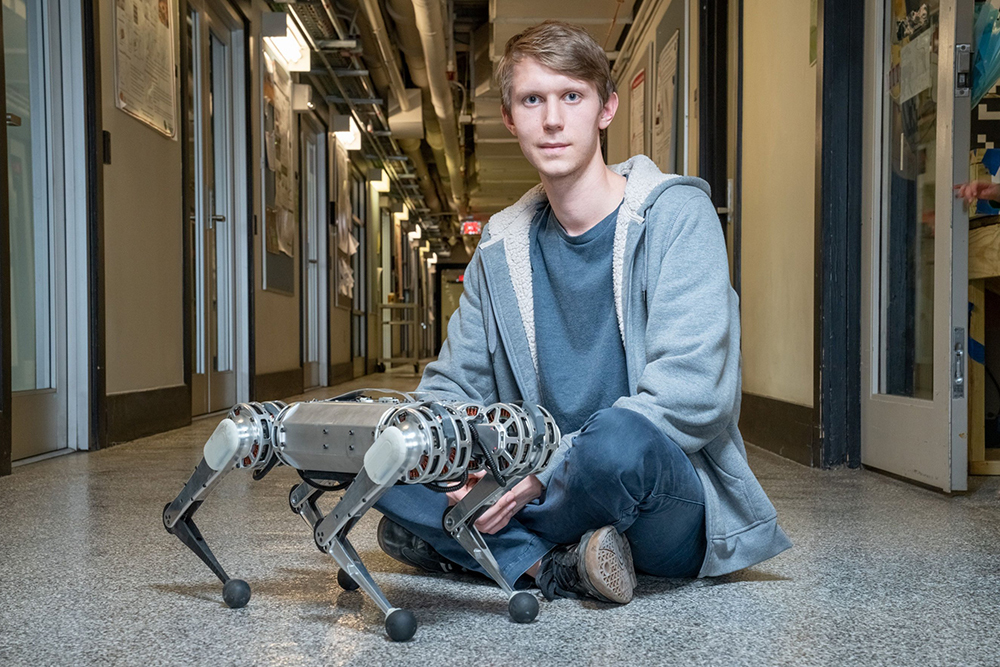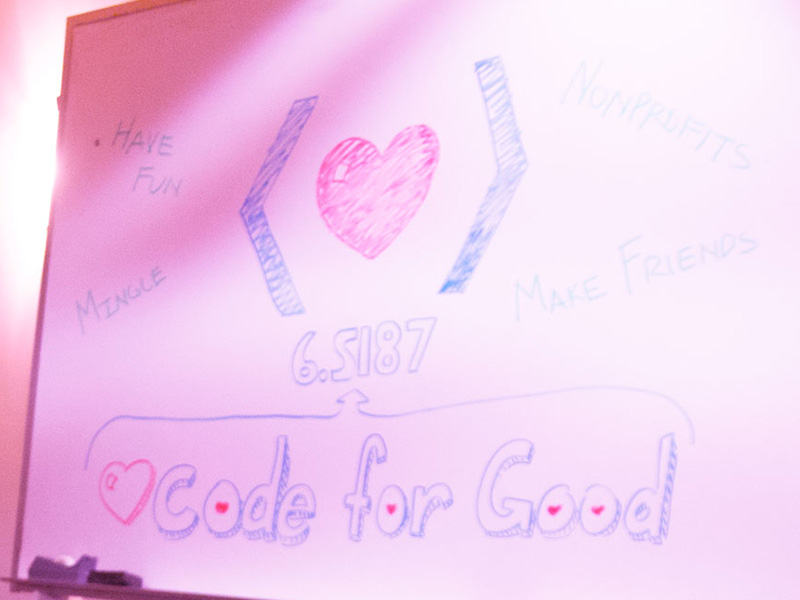From “cheetah-noids” to humanoids
Benjamin Katz '16, SM '18 is applying the skills he gained working on MIT's mini cheetah robot to the ATLAS project at Boston Dynamics.

In November 2018, MIT Professor Sangbae Kim brought his mini cheetah robot onto “The Tonight Show’s” Tonight Show-botics segment. Much to the delight of host Jimmy Fallon, the mini cheetah did some yoga, got back up after falling, and executed a perfect backflip. Behind the stage, Benjamin Katz '16, SM '18 was remotely controlling the cheetah’s nimble maneuvers.
For Katz, waiting in the wings as the robot performed in front of a national audience was the culmination of nearly five years of work.
As an undergraduate at MIT, Katz studied mechanical engineering, opting for the flexible Course 2A degree program with a concentration in controls, instrumentation, and robotics. Toward the end of his first year, he emailed Kim to see if there were any job opportunities in Kim’s Biomimetic Robotics Lab. He then spent the summer in Kim’s lab as part of the MIT Undergraduate Research Opportunities Program (UROP). For his UROP research and undergraduate thesis, he began to look at how to utilize pieces built for the electronics hobby market in robotics. “You can find really high-performance motors built for things like remote control airplanes and drones. I basically thought you could also use these parts for robots, which is something no one was doing,” recalls Katz.
Kim was immediately impressed by Katz’s abilities an engineer and designer.
“Ben is an extremely versatile engineer who can cover structure and mechanism design, electric motor dynamics, power electronics, and classical control, a range of expertise usually requiring four-to-five engineers to cover,” says Kim.
After deciding to pursue a master’s degree in mechanical engineering at MIT, Katz continued working in Kim’s lab and developed solutions for actuators in robotics. While working on the third iteration of Kim’s robot, known as Cheetah 3, Katz and his labmates shifted their focus to developing a smaller version of the robot.
“There are a lot of nice things about having a smaller robot: If something breaks you can easily fix it, it’s cheaper, and it’s safe enough for one person to wrangle alone,” says Katz. “Even though a small robot may not always be the most practical for real-world applications, its controllers, software, and research can be trivially ported to a big robot that can carry larger payloads.”
Drawing upon his undergraduate research, Katz and the research team used 12 motors originally designed for drones to build actuators in each joint of the small quadruped robot that would be dubbed the “mini cheetah.”
Armed with this smaller robot, Katz set out to make the mini cheetah more agile and resilient. Alongside then-EECS student Jared Di Carlo '19, Mng '20, Katz focused on controls related to locomotion in the mini cheetah. In class 6.832 (Underactuated Robotics), taught by Professor Russ Tedrake, the pair worked on a project that would allow the mini cheetah safely backflip from a crouched position.
“It was basically a giant offline optimization problem to get the mini cheetah to backflip,” says Katz.
Using offline nonlinear optimization to generate the backflip trajectory, he and Di Carlo were able to program the mini cheetah to crouch and rotate 360 degrees around an axis.
While working on the cheetah, Katz was constantly pursuing other engineering projects as a hobby. This included a very different rotating robot as a pet project. Alongside Di Carlo, Katz utilized the MIT community makerspace known as MITERS to develop a robot that could solve a Rubik’s Cube in a record-breaking 0.38 seconds.
“That project was purely for fun during MIT’s Independent Activities Period,” recalls Katz. “We used custom-built actuators on each of the Rubik’s Cube’s faces alongside webcams to identify the colors and move the blocks accordingly.”
He chronicled his other pet projects on his “build-its” blog, which developed a strong following. Projects included planar magnetic headphones, a desktop Furuta pendulum, and an electric travel ukulele.
“Ben was constantly building and analyzing something along with our lab and class projects during his entire time at MIT,” says Kim. “His incessant desire to learn, build, and analyze is quite remarkable.”
After graduating with his master’s degree in 2018, Katz worked as a technical associate in Kim’s lab before accepting a position at Boston Dynamics in 2019.
As a designer at Boston Dynamics, Katz has transitioned from cheetah robots to humanoid robots on ATLAS, a research platform billed as the “world’s most dynamic humanoid robot.” Much like the mini cheetah, ATLAS can execute incredibly dynamic maneuvers, including backflips and even parkour.
While the mini cheetah holding yoga poses and ATLAS doing parkour seems like entertainment befitting "The Tonight Show," Katz is quick to remind others that these robots are fulfilling a real-world need. The robots could someday maneuver in areas that are too dangerous for humans — including buildings that are on fire and disaster areas. They could open new possibilities for lifesaving disaster relief and first-responders in emergencies.
“What we did in Sangbae’s lab is going to help make these machines ubiquitous and actually useful in the real world as viable products,” adds Katz.





































